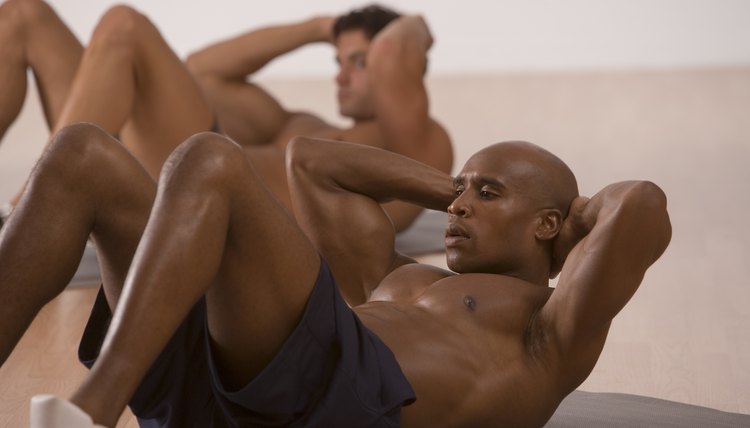What does fact checked mean?
At SportsRec, we strive to deliver objective content that is accurate and up-to-date. Our team periodically reviews articles in order to ensure content quality. The sources cited below consist of evidence from peer-reviewed journals, prominent medical organizations, academic associations, and government data.
The information contained on this site is for informational purposes only, and should not be used as a substitute for the advice of a professional health care provider. Please check with the appropriate physician regarding health questions and concerns. Although we strive to deliver accurate and up-to-date information, no guarantee to that effect is made.
The Bent-knee Curlup Is a Muscular Resistance Exercise That Primarily Works Which Muscle Group?

The bent-knee curlup is a type of crunch that is a strength exercise for abdominal muscles. This is a basic crunch for beginner and intermediate exercisers, although you can add weight to increase the difficulty of the exercise. It targets your abdominal muscles and does not work any other muscles in your core, such as the low back.
Identification
To do the bent-knee curlup, lie on your back on the floor or a mat. Place your hands behind your head or across your chest. Do not grab or yank on your head with your hands. Lightly place them next to your ears. Bend your knees and set your feet flat on the floor. The American Council on Exercise recommends positioning your feet about 12 to 18 inches from your tailbone. Exhale and curl up, pulling your shoulder blades off the floor.
Function
The primary mover during the bent-knee curlup is the rectus abdominis, which is the most visible ab muscle. This sheath of muscle runs from your chest, down the front of your body, to your lower ribs. Although divided into sections, the rectus abdominis contracts as one muscle. Your obliques, or side abdominal muscles, are secondary movers during the bent-knee curlup; they assist the rectus abdominis.
Benefits
The bent-knee curlup is a basic exercise with limited motion. This makes it a good exercise for beginners. Because the movement is not too complicated, you can focus on working your abdominal muscles and doing the exercise with good form. Unlike a situp where you lift your lower back off the floor, you keep your lower back in contact with the floor during the bent-knee curlup. This reduces stress on your lower spine. Bending your knees also minimizes hip flexor involvement, so the focus stays on your abdominal muscles.
Variations
The bent-knee curlup is the most basic version of the curlup. Once you learn the proper form, advance to more challenging variations. Hold weight on your chest or over your head. Perform the curlup on a stability ball, which adds an element of instability. Add a twisting motion to the bent-knee curlup to focus more on your side abs, although your rectus abdominis will still be a primary mover.
References
Resources
Writer Bio
Based in Austin, Texas, Jolie Johnson has been in the fitness industry for over 12 years and has been writing fitness-related articles since 2008 for various websites. She received her Bachelor of Arts in English and philosophy from the University of Illinois.
